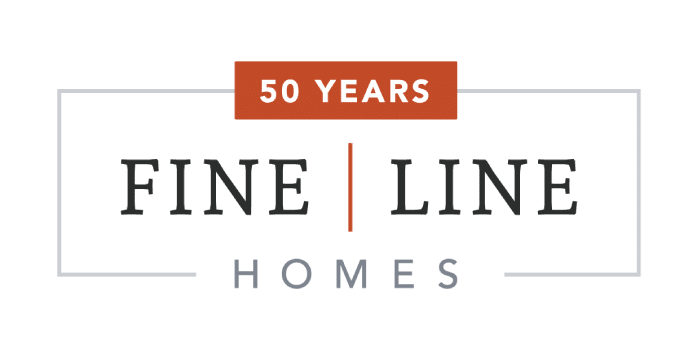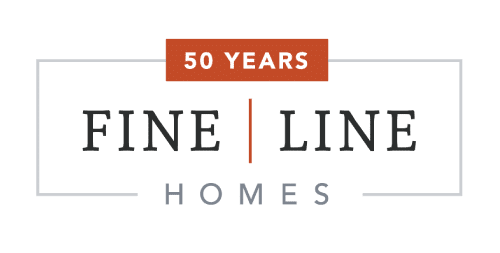You’re thrilled to be building a home. Finally you’ll be able to live in your dream house, complete with all the comforts and features you want. You’ve done your basic research, and are starting to get bids. That’s when you run into an unexpected, seemingly-unexplainable puzzle: The cost-per-square-foot conundrum.
Why is this a mysterious issue? In a nutshell, it’s the reality that comparing the price of building two new homes by square footage doesn’t seem to make sense. On one hand, an 1800 square foot house could wind up with a price tag of $100/square foot, while another house with the same square footage could be priced 10-20% higher or lower per square foot. They look the same… but why are their end costs so vastly different at the end of the day?
The answer can be broken down into three parts. First is the issue of square footage itself. The second is the issue of materials. The final consideration has to do with buyer personality and needs.
Square Footage: Not All Square Feet Are Created Equally
When you look at the square footage of a property, you are looking at a very raw number. Usually, the square footage of a residence is a mix of several factors:
- The design of the home. Offsets, complexity of the roof and spans will effect cost.
- The square footage of the livable, above-ground space. This is typically your first floor, second floor, etc. Some builders include a family room with a two story ceiling as square footage on the second floor.
- A percentage of the square footage of other spaces, such as your garage. Some builders have this added to their square footage total, some do not.
- A percentage of your underground spaces, like basements. A finished basement, or even an unfinished basement, is sometimes included into the total square footage.
This begins to explain why it’s so tough to judge one newly-built home with another, even if they both have the same square footage. Plus, there’s another aspect to keep in mind. Specifically, it’s the way the home is laid out.
Having a variety of layouts to choose from is great for individuals and families building a home. It can also drastically change the price per square foot. For instance, adding another bathroom to the second floor by taking space from another room, hallway or walk-in closet will inevitably make the space more functional, as well as increase the end cost per square foot. A bathroom requires more involvement than a closet, after all. Thus, a home with two-and-a-half bathrooms, rather than one-and-a-half bathrooms, may have the same square footage, but different cost-per-square foot.
Materials: Foundational Elements and Their Role in Square Footage Cost
Consider the case of two classic men’s suits. They are both blue and single-breasted. They both have side vents and similar numbers of pockets and buttons. They’re the same size, and are ready to wear off the rack. But are they really equal?
A closer look could reveal that one suit has been made with premium wool, while the other is constructed with a cheaper wool blend. The premium wool suit has a sleek lining, while the other suit has no lining. Plus, the wool suit feels more comfortable without any synthetic scratchiness. At the end of the day, both suits will perform, but you’ll probably have to replace the second suit sooner, or at least pay for a tailor to make repeated repairs.
Obviously, you would expect to pay more for the first suit, despite the fact that it uses about the same amount of fabric as the other. The same principle holds true for new homes.
The foundational materials used during new home construction vary as much as fabrics for suits and other garments. There are top-of-line products, mid-level products, and cheaply-made products. Each builder has a preference as to which materials are available for your home. As a result, two 2,000 square foot homes could be made identically, but will still have a different cost-per-square-foot because of the types of materials used during construction.
While this doesn’t mean that you have to gravitate toward the most expensive square footage, or that you can’t negotiate to use lower-cost materials, you should always keep the following thoughts in mind:
- Premium materials tend to hold up longer and protect your home without problems. This reduces your annual financial outlay to keep your property in tiptop shape.
- World-class products usually include excellent warranties and other guarantees. These give you peace of mind, as well as save you money in case repairs are required.
- Better materials usually mean fewer headaches because they have been more fully tested. Even though you won’t see the materials (they’ll mainly be hidden), you’ll get the benefit year after year.
As you discuss your new home with your preferred builder, ask about materials and options. This will help you understand what you’re getting for your square footage cost.
Personal Preferences: The Finishing Touches to Your Home
The last consideration in price-per-square-foot cost discrepancies is the way you want your house to appear and function. A showroom-quality chef’s kitchen complete with marble countertops and high-end appliances is simply going to be pricier than a kitchen with fewer bells and whistles.
Each aesthetic or utilitarian decision you make may cause your cost-per-square-foot to fluctuate. At the end of the day, you have to stick within your budget, but you also have to love your new home. Most people who are building a home want to live there for many years. If you intend to stay for 20-25 years or longer, it may make sense to go with more upscale finishing touches and superior materials. It’s cheaper to do this as part of your new home construction rather than remodeling later, because it will be rolled into your mortgage amortization schedule rather than be a separate loan or lump-sum financial expenditure.
Look Beyond Square Footage to Overall Cost
At the end of the day, your new home’s square footage cost is good to know, but shouldn’t be the deciding factor in your decision to go with one new home builder over another. Instead, you should take the time to vet the builder, ask about the materials used, and think about the amenities you desire.
It’s best to look at the overall cost estimate, and just be aware of the cost-per-square-foot breakdown. This leaves you a wise, informed consumer, and allows you to have a deeper understanding of what you’re getting for your hard-earned dollars.











